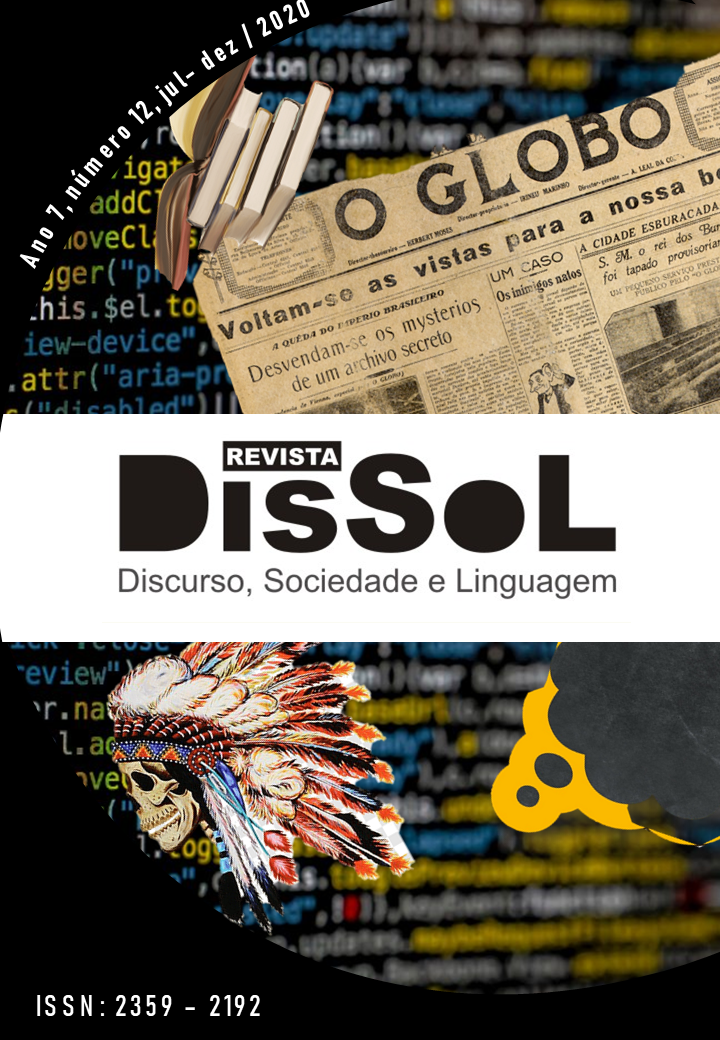SOCIAL EDUCATIONAL SLIDES: LANGUAGE RESOURCE USED BY ADOLESCENT FOLLOWERS MEASURING SOCIAL EDUCATION
Keywords:
slang; lexicon; teenagers; deprived of liberty.
Abstract
ABSTRACT: This article presents one of the varieties present in the Portuguese lexicon, which is slang, spoken especially by teenagers and / or young people who are deprived of their freedom. Slang terms are considered hermetic, therefore difficult to be understood by those who are not part of the group, being really a form of protection and identification of members. The interest in this theme goes beyond making the language of those deprived of liberty known, but in treating slang as a creative and meaningful source on the part of its users. The study seeks from the beginning of an analysis carried out with a lexical corpus (words and expressions used by individuals in the condition of being guarded), to show how these adolescents create slang, without knowledge of linguistic resources. It is hoped that this research will facilitate the practice of several professionals who live with these adolescents, seeking a better understanding of the theme and allowing to guide future research, contributing as a versatile tool for the development of the verbal communication process. Keywords: slang; lexicon; adolescents; deprived of liberty.References
BAGNO, Marcos. Preconceito linguístico: o que é, como se faz. 37ed. São Paulo: Loyola, 2005.
BRASIL. Lei nº 8.069, de 13 de julho de 1990: Estatuto da criança e do adolescente. 9. ed. São Paulo: Atlas, 2000. (1990).
CABELLO, Ana R. G. Linguagens especiais: realidade linguística operante. UniLetras, v.24, 2002. Disponível em: www.revistas2.uepg.br/index.php/uniletras/article/download/242/238. Acesso em 10 Abril de 2017.
OLIVEIRA, M. L. T.. A gíria dos internos da FEBEM. Dissertação de Mestrado. PUCSP. São Paulo, 2006.
PRETI, D. F., A Gíria e outros temas. São Paulo: Edusp, 1984a.
PRETI, D. F. Dicionários de Gíria. In: Revista ALFA, nº 44. UNESP. São Paulo, 2000.
___________. A Gíria na língua falada e escrita: Uma longa história de preconceito social In: PRETI, D. F. (org), Fala e Escrita em questão. São Paulo: Humanitas, 2003a, p. 241-257.
___________. O Vocabulário oral popular: a gíria. In: PRETI, Dino. Estudos de Língua Oral e Escrita. Rio de Janeiro: Lucerna, 2004.
PRETI, D. F. O léxico na linguagem popular: a gíria. 2007. Disponível em https://www.fflch.usp.br/dlcv/lport/pdf/slp18/02.pdf. Acesso em Março de 2017.
REMENCHE, M. L. R.. As criações metafóricas na gíria do sistema penitenciário do
Paraná. Dissertação de Mestrado. UEL. Londrina, 2003.
SILVA, Maria Edileuza Tavares. Os sentidos da liberdade. O léxico gírio como resultado de uma produção léxica criativa e significativa. Araraquara. 2008.
VENEROSO, Paula Cristina. A divulgação da Gíria na imprensa: a descaracterização de um signo. São Paulo: Dissertação de Mestrado. PUC/SP. São Paulo/SP. 1999.
BRASIL. Lei nº 8.069, de 13 de julho de 1990: Estatuto da criança e do adolescente. 9. ed. São Paulo: Atlas, 2000. (1990).
CABELLO, Ana R. G. Linguagens especiais: realidade linguística operante. UniLetras, v.24, 2002. Disponível em: www.revistas2.uepg.br/index.php/uniletras/article/download/242/238. Acesso em 10 Abril de 2017.
OLIVEIRA, M. L. T.. A gíria dos internos da FEBEM. Dissertação de Mestrado. PUCSP. São Paulo, 2006.
PRETI, D. F., A Gíria e outros temas. São Paulo: Edusp, 1984a.
PRETI, D. F. Dicionários de Gíria. In: Revista ALFA, nº 44. UNESP. São Paulo, 2000.
___________. A Gíria na língua falada e escrita: Uma longa história de preconceito social In: PRETI, D. F. (org), Fala e Escrita em questão. São Paulo: Humanitas, 2003a, p. 241-257.
___________. O Vocabulário oral popular: a gíria. In: PRETI, Dino. Estudos de Língua Oral e Escrita. Rio de Janeiro: Lucerna, 2004.
PRETI, D. F. O léxico na linguagem popular: a gíria. 2007. Disponível em https://www.fflch.usp.br/dlcv/lport/pdf/slp18/02.pdf. Acesso em Março de 2017.
REMENCHE, M. L. R.. As criações metafóricas na gíria do sistema penitenciário do
Paraná. Dissertação de Mestrado. UEL. Londrina, 2003.
SILVA, Maria Edileuza Tavares. Os sentidos da liberdade. O léxico gírio como resultado de uma produção léxica criativa e significativa. Araraquara. 2008.
VENEROSO, Paula Cristina. A divulgação da Gíria na imprensa: a descaracterização de um signo. São Paulo: Dissertação de Mestrado. PUC/SP. São Paulo/SP. 1999.
Published
2020-12-07
How to Cite
Miranda Arraz, F. (2020). SOCIAL EDUCATIONAL SLIDES: LANGUAGE RESOURCE USED BY ADOLESCENT FOLLOWERS MEASURING SOCIAL EDUCATION. Revista DisSoL - Discurso, Sociedade E Linguagem, (12), 29-40. Retrieved from http://ojs.univas.edu.br/index.php/revistadissol/article/view/737
Section
Artigos
Autores que publicam na Revista DisSoL mantêm os direitos autorais e concedem à revista o direito de primeira publicação, com o trabalho simultaneamente licenciado sob a Licença Creative Commons Attribution que permite o compartilhamento do trabalho com reconhecimento da autoria e publicação inicial nesta revista.
Ao submeterem textos para avaliação e possível publicação nesta revista os autores comprometem-se a respeitar os preceitos éticos de produção e publicação de pesquisas científicas.





